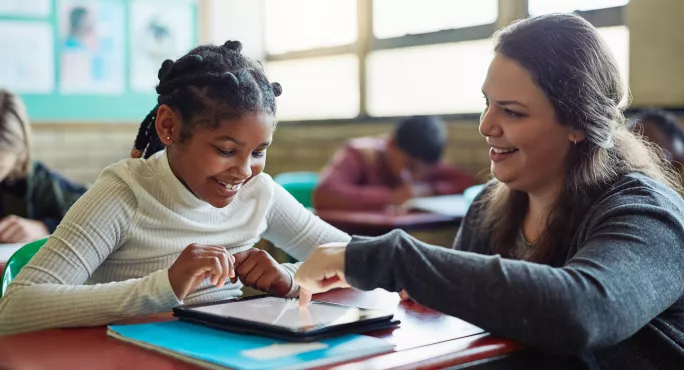Every student is unique, with different strengths, abilities and requirements - but all deserve to have their learning needs met.
Providing support to children with more complex needs is not always straightforward, though, with a lack of funding and limited support from external agencies often cited as obstacles to improving special educational needs and disabilities (SEND) provision.
So how can schools support these students and ensure that they have the same opportunities for learning as others?
Edtech enhancing SEND support in schools
One answer is to look to technology. During the course of the pandemic, education technology has cemented its place in the classroom as schools have looked for alternatives to face-to-face teaching.
This increased reliance on edtech has demonstrated that, for some learners, the traditional learning environment might not be the best place for them to succeed, and that support from digital tools can offer them additional opportunities to excel.
But for learners with sometimes complex and unique needs, and so many digital solutions available, how do teachers know what is right for each individual?
“It’s absolutely key for educators to fully understand the range of potential barriers,” says Annamarie Hassall, CEO of NASEN (National Association for Special Educational Needs).
Teachers also need to “proactively think about accessibility for individual learners” and focus on how to ensure that they provide equity of education for students from the moment they set foot in the classroom, she adds.
“We talk about inclusion by design. Going to a classroom environment, for instance, and thinking about set-up and access from the outset, rather than later retrofitting in the solutions to remove the barriers,” she explains.
This idea of inclusion by design has been an integral part of Stephen Taylor’s work. He is senior learning technologist at Blackpool and The Fylde College.
“As part of our mandatory training for staff, we’ve got a basics of accessibility module where staff learn how to use the accessibility tools built into Microsoft Office and Canvas, the learning management system we use,” he says.
Making the most of accessibility tools
The school takes a holistic approach, designed to help staff to develop a mindset of inclusive practice, he continues. Rather than fighting problems as they appear, the school aims to lay the groundwork that will prevent accessibility issues from ever becoming a barrier to learning in the first place.
For instance, it makes sure that every member of staff is given the means to interact with every student in the school.
“Every single support member of our staff can access students through Teams and through Canvas and go in and actually help the student with their work directly,” Taylor says.
However, he is keen to highlight that accessible learning tools aren’t just for those that need them the most; they are also about eliminating some of the hurdles that any student might face.
“By bringing in the accessible toolkit you’re actually making it easier for those [with high attainment] as well. It’s taking some of the mental strain off and helping them to focus on the work that they need to be doing without lots of distractions,” says Taylor.
Problems remain, though. In many cases, one of the biggest obstacles to schools using these tools more effectively is a lack of access to digital devices.
This is an issue that Taylor is familiar with, as Blackpool has some of the most deprived wards in the country: “If you look at the statistics, 25 per cent of our students don’t have a device,” he says.
In addition to this, many education settings also face problems around overcoming dismissive attitudes towards digital learning among staff - although the pandemic has helped here, changing the way that many teachers view these tools.
“It accelerated the use of digital technology to support learning as almost ‘learning as usual’,” says Hassall. “I would say, just from my observations, that we gained five to six years in terms of attitude, mindset, believing that these were the tools that were required rather than the added extra.”
For Hassall, the pandemic has not only helped to make the case for ensuring that every student has access to a device, it has also shown how important it is for teachers and students to improve their digital skills.
It’s one thing having the tools, she points out, but you also need to be able to use them well.
“That’s not just from a learner’s perspective; that’s from those leading the learning. So, it’s our educators who have a big uphill journey,” she says.
To hear the interviews in full, click on the podcast below:
This podcast is sponsored by Microsoft Education. Microsoft believes that every student deserves the resources and support they need to fully engage in learning so it designs for inclusion so that everyone can benefit. Microsoft is focused on developing non-stigmatising built-in tools to support those with dyslexia and other accessibility needs.
To help you find out more about these built-in tools, Microsoft and Nasen have created a guide for educators and parents.
Microsoft and its partners will also be speaking and demoing the inclusive technology at Bett 2022 and the Dyslexia Show.

